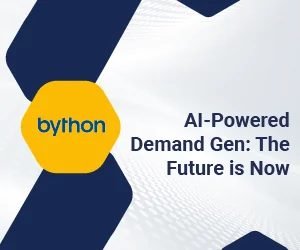With so many changes in the last few years, from the pandemic to the Great Resignation and quiet quitting, Employee disengagement is now recognized as a significant problem for businesses across the globe. A disengaged employee lacks passion for what he/she/they do, applies minimal effort, and fails to exert extra effort in pursuit of innovation.
They are also likely to suffer health risks, causing absenteeism and rising costs.
Research suggests that approximately 75% of organizations cited low levels of employee engagement in the work environment. Regaining the commitment, enthusiasm, and passion of any person who’s lost interest in their work or faith in their employer is often an uphill battle. That is why proactive measures are so necessary.
Identifying Signs of Disengagement
Early detection of the symptoms of employee disengagement is critical to implementing timely and effective measures to halt the prevailing pattern. Some of the most common signs of disengagement (even if employees don’t explicitly express it in surveys) include:
-
Communication breakdown
Disengaged employees may exhibit a sense of hesitation or reluctance when it comes to sending emails, texts, chat messages, or any other form of communication. They also resist starting a conversation with other members of the team. The absence of individual or group participation in meetings is a tell-tale sign of disengagement.
-
Withdrawal
Disengaged workers will abstain from participating in extracurricular activities such as employee engagement events, functions, or backyard barbecues. Further, they often carry out only the bare minimum of the tasks associated with their position and no longer exercise any discretionary effort.
-
Unexpected breaks
Frequent pauses and absenteeism, which occur when somebody is unexpectedly absent from work, define a disengaged employee’s traits. These two characteristics may affect an individual’s output and workflow efficacy. Breaks without prior notice can also erode trust and team bonds.
-
Silence
Silence is a noticeable marker of disengagement, whether during team discussions, email, any other electronic correspondence, or formal assemblies. When an employee appears distant, team leaders must communicate immediately with them and make themselves available for relaxed, informal, or more structured conversations.
-
Complacency
Complacency is an undeniable indication of disengagement among employees. Employees and managers must participate in candid, two-way conversations on efficiency, expectations, and development in general. Remember, complacency can impede the future trajectory of an organization and hold back employees from realizing their full potential.
-
Fatigue
A prolonged state of burnout can lead to disengagement, manifesting as feelings of fatigue, cynicism, and inefficiency. At one point, these employees may have been exceptionally engaged. However, they needed more resources to look after themselves or sustain their engagement.
-
Curtness at work
As disengagement gathers momentum, individuals may knowingly disobey regulations or standards. They could convey their disillusionment with the organization by constantly criticizing new ideas. They may even develop a brusque demeanor towards other employees or customers — but not so much that they are unprofessional or rude.
3 Communication Tools to Enhance Engagement
Employee disengagement can be significantly alleviated with the strategic application of communication tools. These consist of:
-
Real-time collaboration platforms
Real-time messaging platforms, like Microsoft Teams and Slack, help global organizations communicate in real time. Rapid dissemination of information among team members can be achieved via instant messaging apps, file sharing, or video conferencing, enhancing engagement. These platforms also make it easier to spot disengagement by monitoring activity patterns.
-
Enterprise social networks
It’s essential to foster community and oneness among employees to boost employee engagement. Enterprise social network (eSN) apps like Yammer, Jive, and Chatter are great options – or even your intranet — to enable this. These platforms have social feeds, image sharing, commenting, emojis, and other capabilities that drive a sense of belonging and engagement.
-
Dedicated employee experience (EX) platforms and mobile apps
Consistent feedback, one-on-one meetings between employees and managers, and specialized tools for their management and automation are vital components when nurturing highly engaged teams. EX platforms enable this with minimal effort on your part. Apps can be downloaded for a wide range of these channels, which is handy for staff members who travel regularly or have flexible schedules.
The Importance of Employee Feedback and Survey Tools
Akin to periodic health checks, employee survey tools monitor the well-being of an organization’s workforce by evaluating the quality of the work environment and company culture. Using these tools can identify early warning signs of worker fatigue or disengagement, and potential improvements can be discovered. Culture Amp, TINYpulse, Lattice, Impraise, and Officevibe are some of the tools to consider in this segment.
This should be adopted by CHROs and people managers when dealing with disengagement:
-
Annual surveys
Annual employee engagement surveys serve as a framework for measuring or assessing employee engagement across the company. The survey findings are a blueprint for formulating plans and strategies this year.
-
Pulse surveys
Pulse surveys are typically brief and specific to capture a short snippet of the employee experience. It facilitates inquiries on remote work, diversity, equity, and inclusion (DE&I).
-
Lifecycle surveys
Lifecycle surveys help discover engagement gaps, possible “blank spaces,” and trends across key stages in the employee tenure, from onboarding and their first few months to work anniversaries until severance/exit/retirement.
A feedback and survey tool should have critical features like analytics, flexible reporting, survey templates, integrations, and an intuitive user interface.
Recognition and Reward Systems
Research indicates that recognition inspires and motivates employees more effectively when compared to monetary incentives. According to a survey by Harvard Business Review, acknowledging exceptional performance has an even more significant impact than linking compensation with achieving organizational targets. Seventy-two percent of respondents believe recognition is vital for employee engagement. This aligns with the fundamentals of evolutionary psychology, which assert that humans flee from danger and seek happiness or commendation/rewards.
Choose a robust recognition and reward system that allows you to distribute:
- Milestone and service awards: Employees receive service honors on the day of their work anniversaries. Milestone awards, given to employees on reaching an identified goal, may have a slightly broader scope. This could involve an employee achieving a certain number of training or birthdays.
- Public recognition: This recognition category involves publicly acknowledging employees’ achievements. This may occur via social recognition software, at the beginning of departmental or enterprise-wide meetings, or in a threaded email exchange featuring multiple users.
- Private recognition: Private recognition is restricted to the individual offering it and the person getting it. It is among the most common forms of acknowledgment and necessitates very little strategic planning as long as you have the right tools.
- Peer-to-peer recognition: Typically, these tools are meant for peer-to-peer recognition. Although numerous software options are readily available, CHROs must consider platforms that function as social media apps exclusively for their organization. Employees can write, submit points, comment, and respond on each other’s walls.
Bonusly, Kudos, Fond, Motivosity, and Reward Gateway are some tools to trial in this HR software segment.
Future Trends: How AI and Machine Learning Can Stem Disengagement
In the quest to proactively prevent disengagement, businesses will realize that advanced technologies like artificial intelligence (AI) are indispensable. Strategies for engagement using AI include:
- Advanced algorithms: AI can unlock engagement insights from vast volumes of data, such as survey responses, metrics for performance, and collaboration patterns.
- Machine learning: By using machine learning algorithms, AI can discern correlations and patterns inside the data. Latent connections among various engagement determinants (e.g., appreciation, work-life balance, leadership performance) are revealed, and this empowers and facilitates decisions based on empirical evidence.
- Natural language processing (NLP): The NLP functionalities of AI equip it to examine responses from open-ended surveys, discern the emotional state of employees, and derive critical trends.
- Sentiment analysis: By analyzing employee communications such as conversation archives, social media postings, and emails, AI can ascertain an organization’s overarching sentiment and “mood of the moment.”
- Predictive analytics: AI can forecast forthcoming engagement trends with machine learning and historical data. It can identify the factors contributing to increased engagement and predict possible areas for enhancement.
To understand employee disengagement comprehensively, it’s essential to participate in active listening and garner insights into the factors that enthuse your workforce. Fortunately, advancements in HR technology allow CHROs to mitigate disengagement risk and preemptively open new avenues toward productivity.







